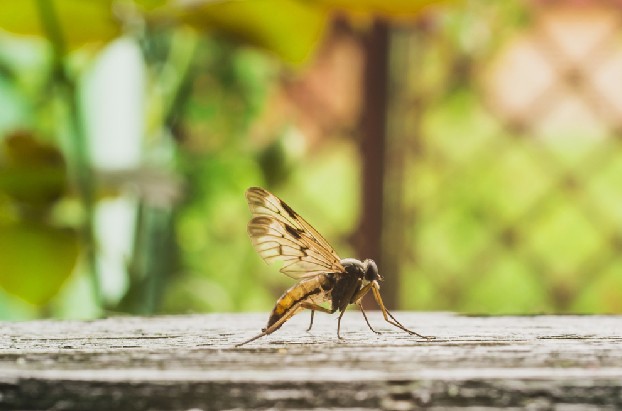Wonders of Creation
The Symphony of Creation: Amazing Secrets of Animals, Humans, and the Universe
Explore how animals, insects, and even our own bodies reveal astonishing design, precision, and harmony in the natural world
- Hidabroot
- |Updated

The Midrash tells a story about a skeptic who once asked Rabbi Akiva: “Who created this world?”
Rabbi Akiva answered: “The Holy One, blessed be He.”
The skeptic demanded: “Show me clear proof.”
Rabbi Akiva responded with a simple analogy. He asked the man, “What are you wearing?”
“A garment,” the skeptic replied.
“Who made it?” asked Rabbi Akiva.
“The weaver,” answered the skeptic.
“But I don’t believe you,” said Rabbi Akiva. “Show me clear proof.”
Rabbi Akiva then concluded: “Just as a house proves the existence of its builder, a garment proves the weaver, and a door proves the carpenter — so too the world itself testifies that it has a Creator.” (Midrash Temurah)
The Path to Awe and Love
Maimonides (Rambam) explains: “How does a person come to love and revere God? By contemplating His wondrous and great works of creation, and seeing in them a wisdom without measure or end. Immediately one is filled with love, praise, and longing to know the Great Name.” (Hilchot Yesodei HaTorah 2:2)
From the smallest creatures to the vastness of the cosmos, every detail reveals a harmony that invites reflection.
Sea Turtles and the Mystery of Navigation
Consider the sea turtle that grazes peacefully along the Brazilian coast. Once every two years, these turtles slowly swim 2,250 kilometers to the tiny Ascension Islands — barely visible on a map, where they lay their eggs, and then return to Brazil. How do they know to find these precise islands?
The Daily Discipline of Seaweed
A certain type of algae, though lacking flowers or fruit, sinks deep into the ocean every evening. Each morning it “knows” the exact moment of sunrise, ascending over two hours in perfect synchronization with the dawn — accurate to within one or two minutes.
The Mosquito’s Intricate Design
Even the tiny mosquito is a marvel: it has a heart, stomach, intestines, blood vessels, and nerves. When it pierces human skin, it performs a feat comparable to drilling a hole through a wall 40 centimeters thick relative to its size.
It injects a natural anesthetic so that we don’t feel pain until it has already flown away. Along with the bite, thousands of parasites can enter our bloodstream, some carrying malaria. These parasites are microscopic compared to the mosquito itself, yet perfectly adapted to their roles.
Bees, Bats, and Butterflies: Communication and Defense
The bee scouts a flower field and communicates its location through a precise “dance.” The rhythm signals distance, while the dance direction acts like a compass relative to the sun, even on cloudy days. Unlike us, bees see ultraviolet light, which reveals flowers in ways invisible to the human eye.
The bat hunts moths at night. Some moths, though deaf to the sounds of the world, can detect only the ultrasonic signals of bats — an elegant defense system. Other butterflies evade predators by displaying wing patterns resembling the eyes of larger birds, scaring off would-be attackers.
The Water Spider’s Ingenious Nest
The water spider builds a spherical silk nest underwater. It repeatedly traps air bubbles on its body, dives, and releases them into the nest until it is filled with breathable air. Inside this submerged “balloon house,” it raises its young in safety.
Crickets and Moths: Nature’s Communication Systems
The female moth emits a silent signal, detectable only by her mate over vast distances. By contrast, the cricket creates sound by rubbing its wings or legs, vibrating air with the force of 600 tons — audible to a mate half a mile away. Nature invented wireless communication long before humans built radios.
The Hidden War Inside Us
While we sit comfortably in front of a computer, a silent battle rages inside our bodies. Our immune system constantly fights invading antigens with tailor-made antibodies, each designed to neutralize a specific threat. No human general has ever devised a defense strategy so precise and efficient.

The Eye: A Masterpiece of Engineering
Our eyes are equipped with lenses, retinas, and optic nerves that create stereoscopic, colorful images. The retina alone has over 30 million rods and 3 million cones, all perfectly arranged to capture light and detail. The brain instantly flips the image right-side up and interprets it with astonishing speed.
The Ear: An Instrument of Harmony
The human ear contains 4,000 microscopic arches finely tuned to detect everything from thunder to the delicate harmonies of an orchestra. Animals surpass us in hearing higher frequencies, but humans invent technology like microphones and radios to compensate.
The Earth and the Cosmos: Fine-Tuned for Life
The distance from Earth to the sun is 150 million kilometers. If it was any closer, water would evaporate, and if any farther, Earth would freeze. The planet’s 24-hour rotation prevents burning days and freezing nights, and its 23-degree tilt gives us seasons.
The ozone layer filters deadly radiation while letting in just enough sunlight for life. Oxygen levels remain at 21% — any higher, and a single lightning strike could ignite forests worldwide. Meanwhile, plants recycle carbon dioxide into oxygen, maintaining balance.
Even soil-dwelling beetles release methane gas, which plays a role in atmospheric stability. Scientists once studied these phenomena separately, unaware of their interconnection.
Science and Faith: Harmony or Chance?
Many scientists, from Nobel laureates to biologists, have marveled at the elegance of these systems. Some see them as evidence of purposeful design, while others attribute them to chance.
As Rabbi Akiva’s parable suggests, just as a house points to its builder, so the world itself hints at something greater. At the same time, belief is not forced. As Maimonides says, the goal is not to “prove” God’s existence but to inspire love and awe through contemplation.
A Closing Reflection
We easily recognize that Chopin’s music did not come from a cat walking across piano keys, and that an encyclopedia did not arise from a printing press explosion. And yet, some still claim that the universe is the product of random cosmic accident.
Like a symphony, creation plays before us. Some hear only noise; others perceive harmony. The question is not whether the music exists, but if we are willing to listen.

